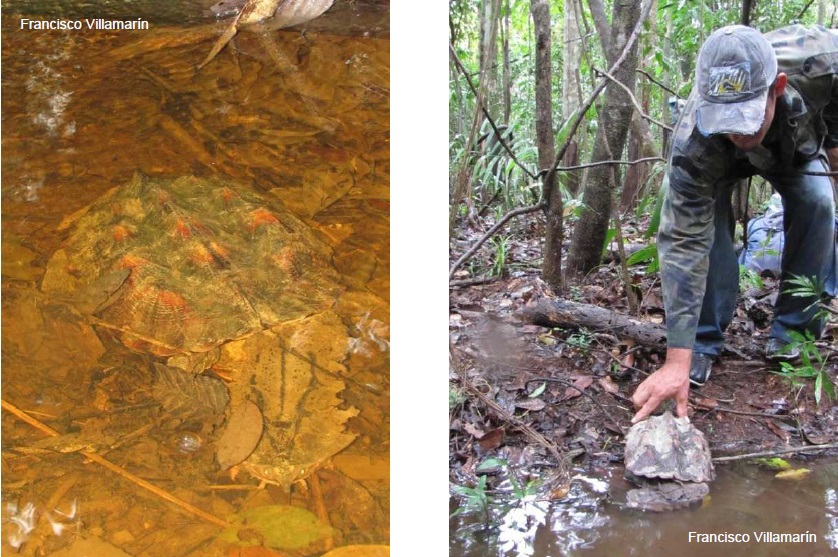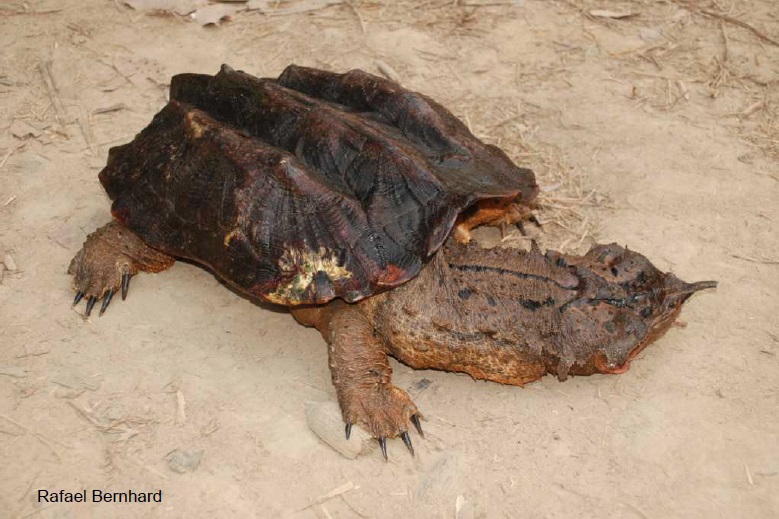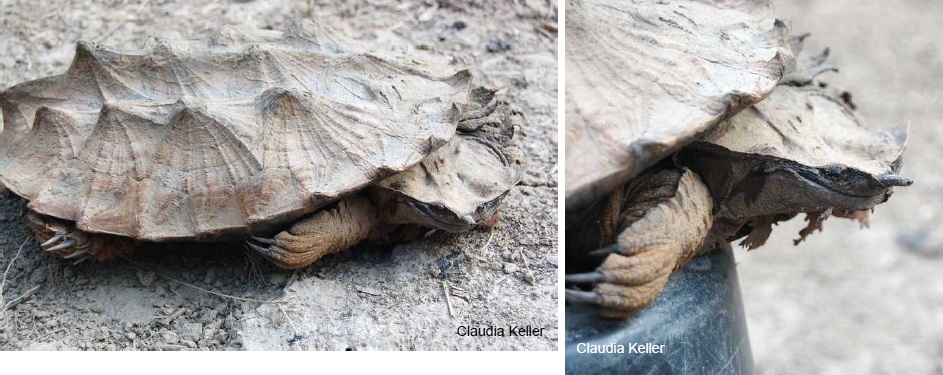 Português
Português English
English
Languages
Chelus fimbriatus



Family: CHELIDAE
Scientific Name: Chelus fimbriata. (The only extant species in its genus.)
Common Name: Mata mata.
Local Name: Mata-matá.
South American Name: bachala ou caripatúa.
Length/Weight: Can measure up to 50 cm in length and weigh 18kg.
Appearance and Behaviour: An easily recognisable species with a flat, triangular head and small eyes. It posesses a long tubular nose which is used to breathe without surfacing. The long neck has flaps of skin which look like leaves and the flattened carapace has pyramid-like projections. Adult females are generally larger than males and the males have a longer thicker tail and a concave plastron. Eyesight is poor, but a well developed typanum and sensory nerves in the skin flaps, tubercles and barbels are probably used to detect vibrations in the water. These adaptations reflect the turtles' preference for living in muddy habitats. Nether adults nor juveniles swim well, preferring to walk along the bottom.
Habitat: Common along the Orinoco and Amazon. They prefer the shallow water of flooded forests along the edges of lakes and rivers and can also be found on the banks of large rivers. This species is totally aquatic and is rarely encountered on land.
Diet: The diet is almost exclusively fish and aquatic invertebrates which it captures by a technique known as suction feeding. The jaws are incapable of chewing and prey is swallowed whole.
Reproduction: The breeding season varies throughout the Amazon basin, depending on the river level. 12-28 brittle, spherical eggs are layed in a nest in sandy soil which may be covered by vegetation to hide it from predators. The long incubation period is about 200 days (more than 6 months) and it has been suggested that hatching is stimulated by contact of the egg with rising waters in order to avoid being inundated.
Exploitation: Not threatened within its range. Not listed on the IUCN red list nor on CITES. It is sometimes encountered in the pet trade and has a reported lifespan of almost 40 years. Although it is sometimes eaten by humans, its appearance may be a deterrent.

